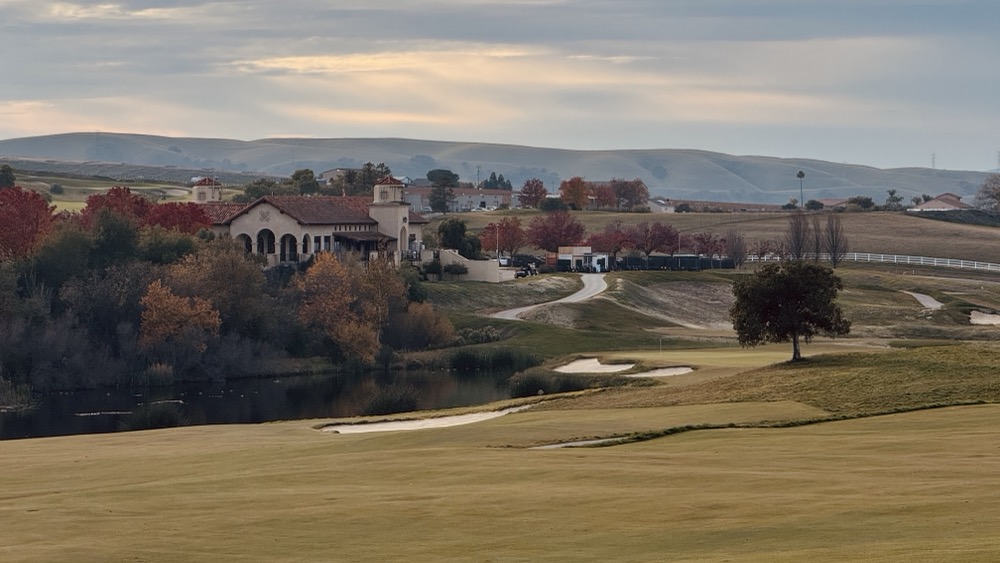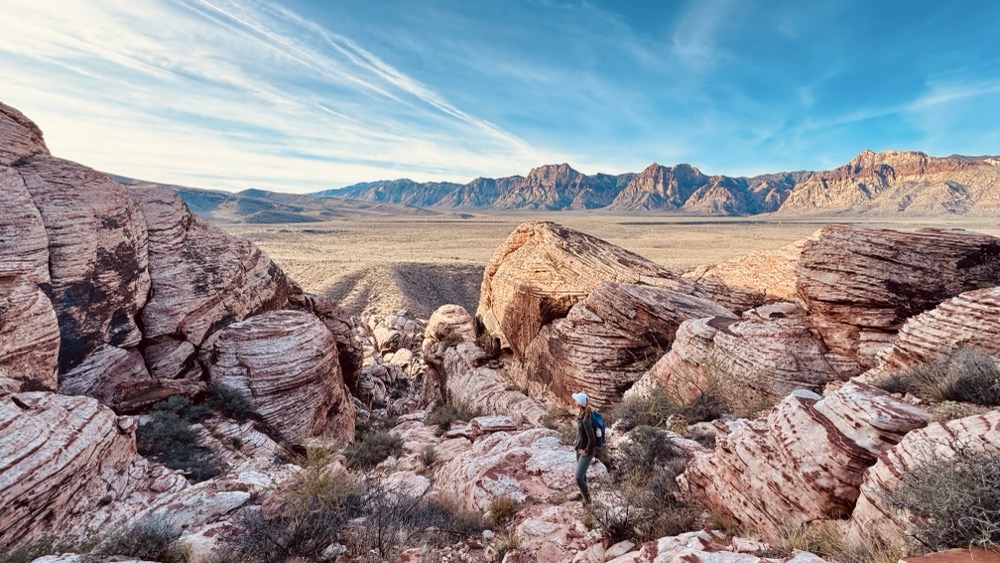Luxury at Camp Okavango
We concluded our time with Kalahari Breeze Safaris with a luxury stay at Camp Okavango.
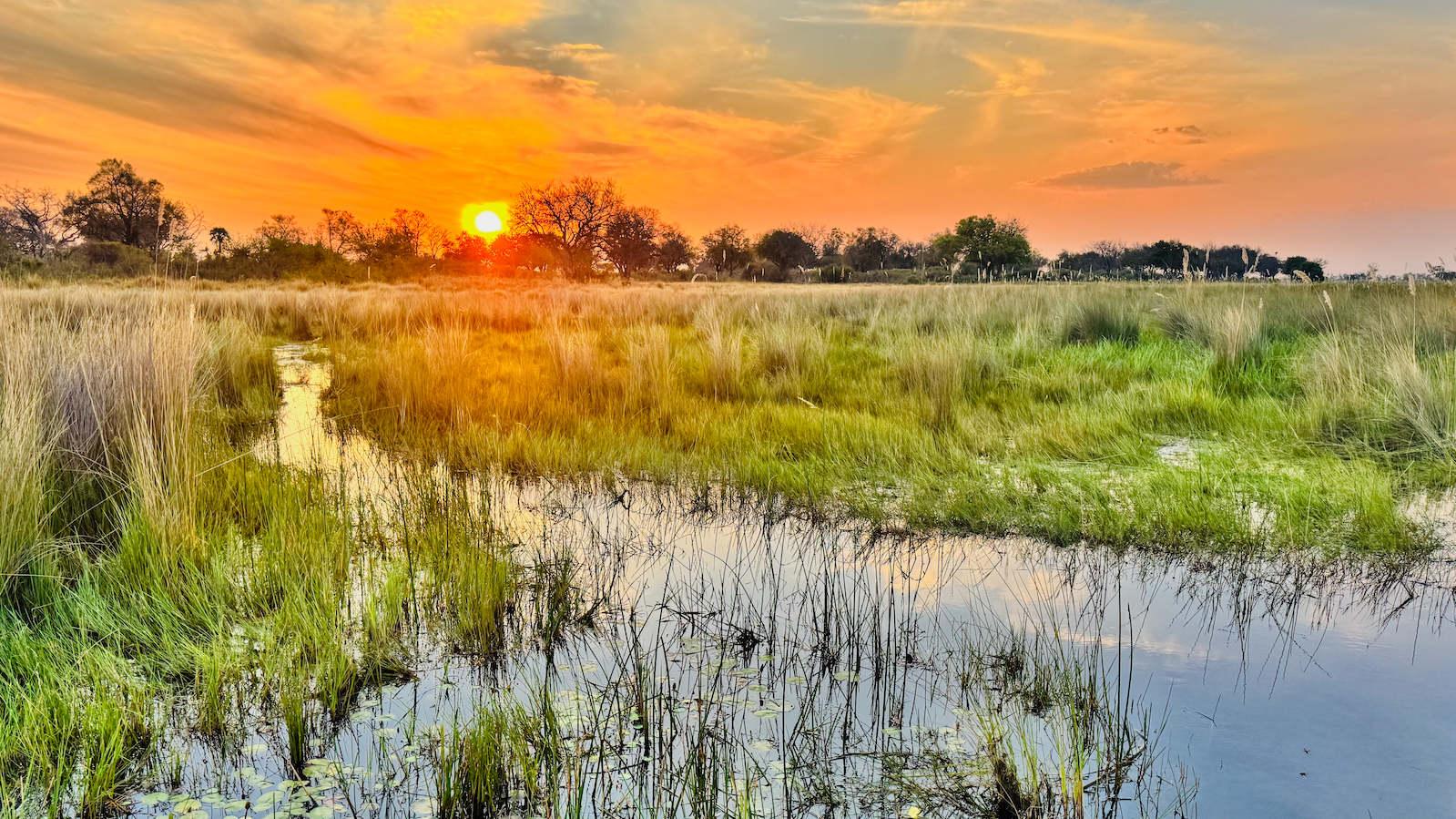 Sunset at Okavango Camp
Sunset at Okavango Camp
After our not-glamping but dusty and dirty wild camping experiences, we had our perfect transition into the final stage of our trip.
Camp Okavango is reached by air, and we flew from an airstrip at Xakanaxa with a significant upgrade: our small transport fixed wing aircraft was upgraded to two helicopters. It was an amazing way to see the Okavango Delta and to arrive at our new home for a few days. For Julie and me it was our first helicopter ride.
The camp is small but luxurious, with 12 different cabins spaced out along a long boardwalk, with the central hub located mid-way. The main area has several covered seating areas for hanging out, a small library, a dining area where everyone eats together, and a small pool with shade.
 Our guide Bargrey
Our guide Bargrey
All activities at Camp Okavango revolve around the water, and our guide for three days was the new but excellent guide Bargrey. With a two-night stay we would have three evening adventures and three morning adventures. Options for the day adventure were boat ride, mokoro ride, and bush walk. We opted for one bush walk and the rest boat rides to explore different parts of the permanent (for now?) channel system surrounding the lodge.
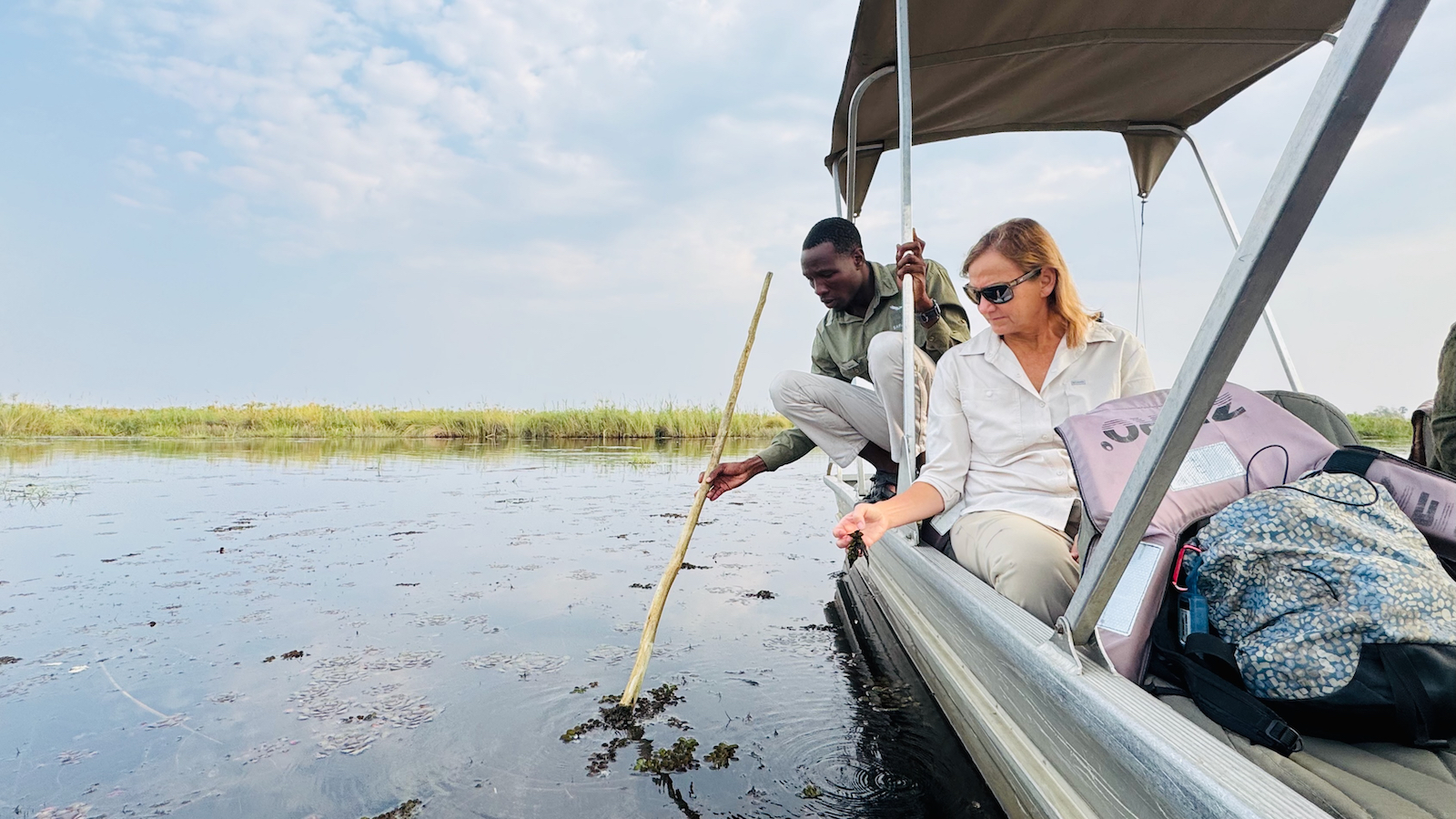 Karen and Bargrey examining the plant life
Karen and Bargrey examining the plant life
The boat rides for us focused primarily on spotting and photographing the bird life, but there were plenty of beautiful plants, and trees. And since we were on water there were always hippos, and often elephants. They are living in luxury here, with easy access to water and significant amounts of nutritious plant life everywhere. We saw them in the dry areas above the water, in the wetlands surrounding the channel, crossing the channel (with a toddler elephant disappearing in the channel a couple of times), and tromping through the creek behind our cabin.
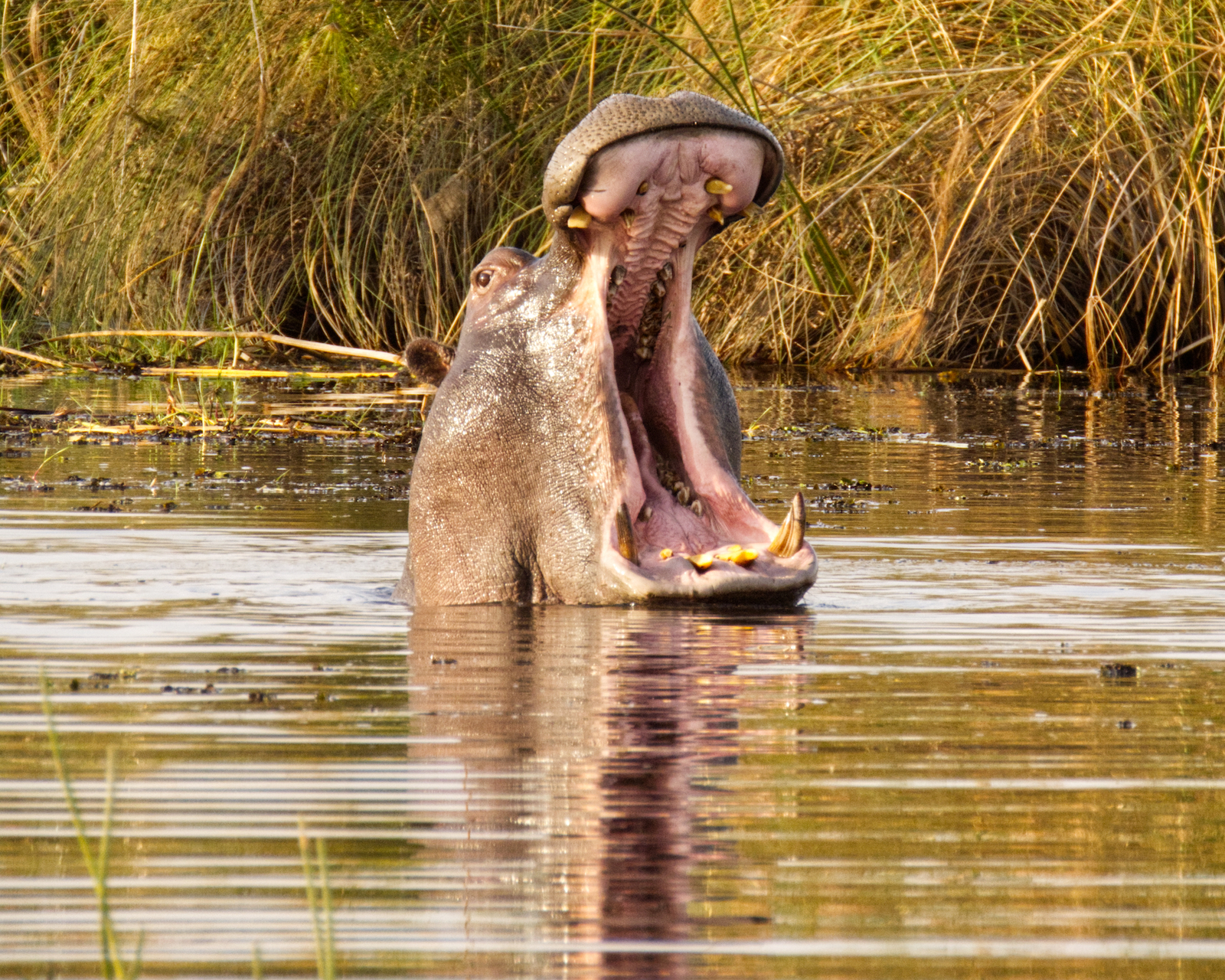 Hippo yawning
Hippo yawning
The hippos made the boat rides fun and added a bit of danger and excitement. While they aren’t a huge threat, if not managed right they can be devastating to even a boat like ours. Bargrey’s approach when hippos blocked the channel was to retreat a bit, observe for a while to see them vanish, then power through quickly to get past their area.
 Our bush walk guide Tau
Our bush walk guide Tau
The bush walk was incredible, mostly because of our bonus seasoned guide Tau. He had a gravitas about him that was awe inspiring. So much knowledge to share and even this seasoned group got a lot from the hike.
 Waterbuck male with his harem
Waterbuck male with his harem
We took the boat about 2 miles to the southeast to a floating dock where we disembarked for about a 2.5 mile walk. There were elephants, warthogs, baboons, waterbuck, impala, and probably more than I’m forgetting.
Tau went deep into so many areas beyond the mammals around us: termite colonies, sausage trees, and the geology of the delta. During our Botswana adventure we’ve been moving further north and further west, gradually moving toward the start of the finger channels that form the delta. The closer you get to the source, the more water there will be. So this area is “peak water” for us.
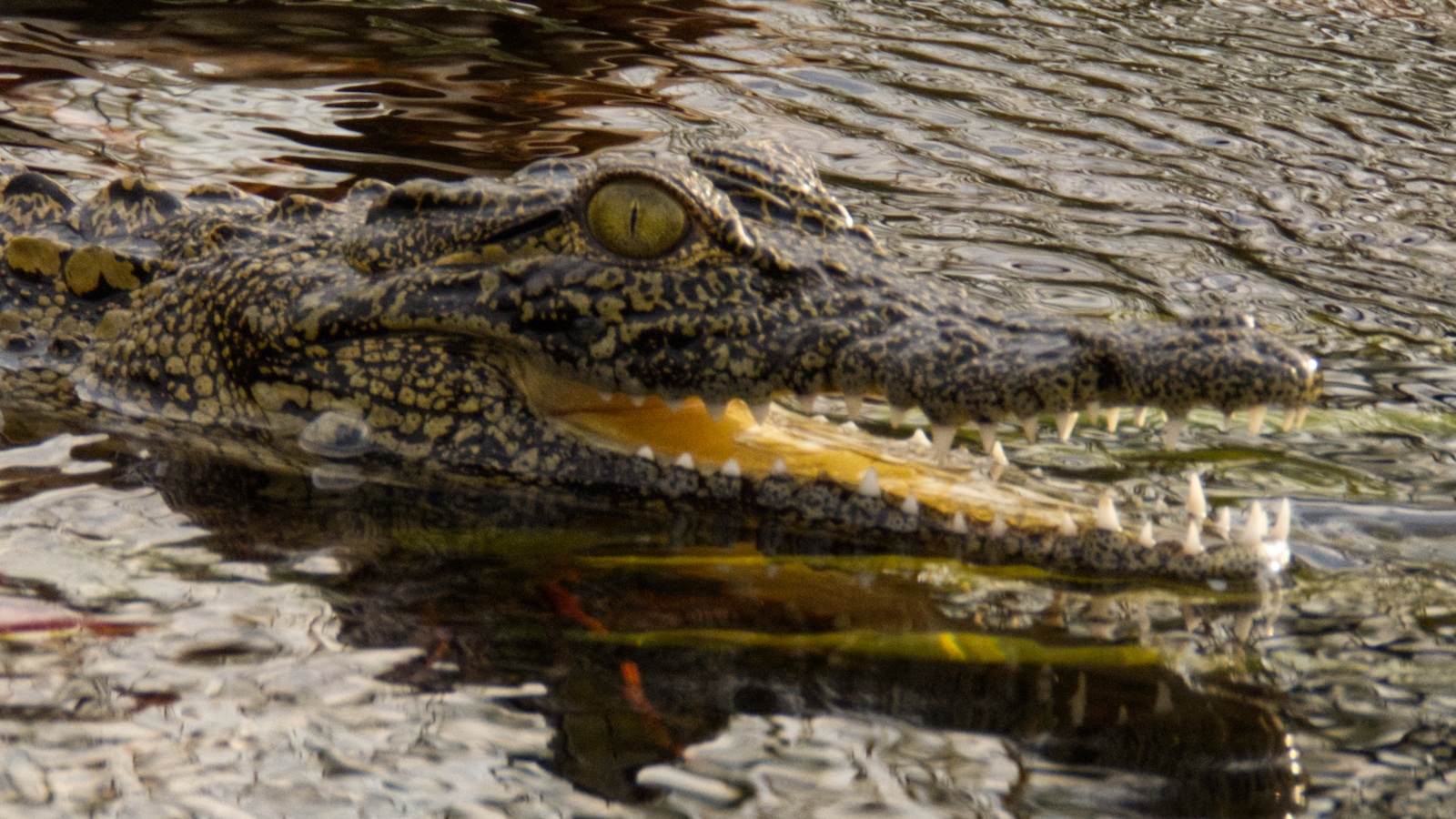 Juvenile crocodile grinning
Juvenile crocodile grinning
Early on in the boat touring we were surprised by the lack of crocodiles, but the closer we looked (and the more Bargrey understood that we wanted to see crocs) the more we started to see. They are unsurprisingly good at hiding in the tiny alcoves along the channel shore. We saw mostly juveniles, but every once in a while there would be a menacing adult laying in hiding in the mud.
 Two hamerkops mating
Two hamerkops mating
Throughout our boat adventures we would cruise past a hammerkop nest (read this section for more info) and on our final morning we saw a hammerkop flying back and forth from the nest to the ground gathering more materials for what looked like a massive and already completed nest.
They make an interesting call, and our guide played an example on his phone. At that point a second hammerkop made an appearance and they started a mating ritual. I say ritual, and I’d like to say that they mated, but apparently they are known for exhibiting “false mounting” so who knows?
It was a great stay, but we were ready to go. The boat centric activities tend to exhaust the geography within a few days, and we felt like we had seen most of the birdlife we would likely see. I should mention that the malachite kingfishers were everywhere! And we saw a new behavior from the pied kingfishers: at sundown when the ibis and darters would convene to roost in the trees, the pied kingfishers would similarly return to a central area and roost together. It was amazing to see 20 or 30 kingfishers together like that; we are used to seeing them as solitary hunters.






